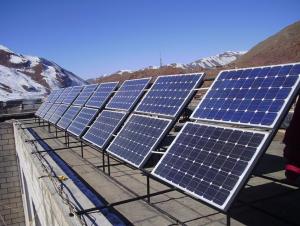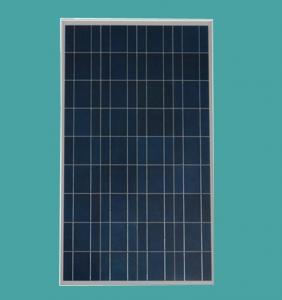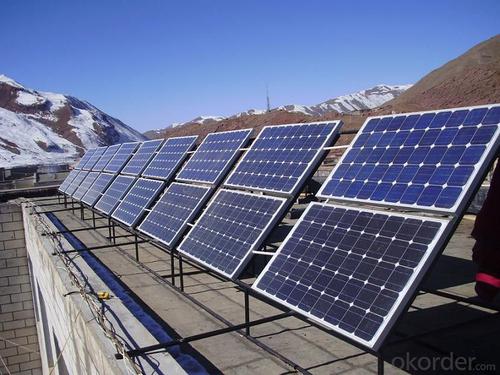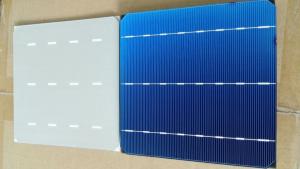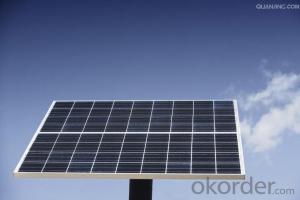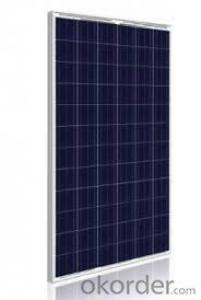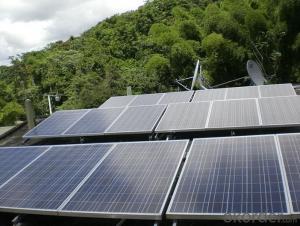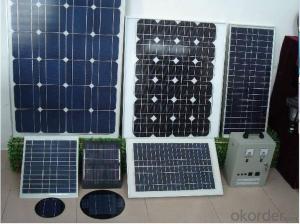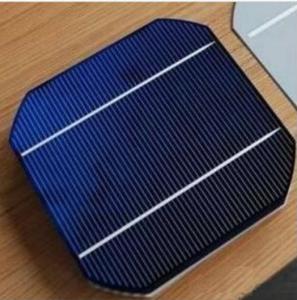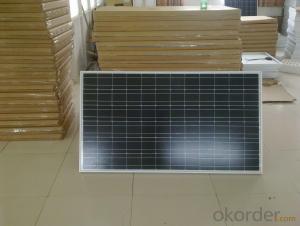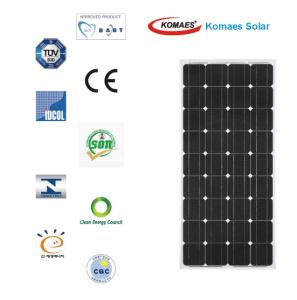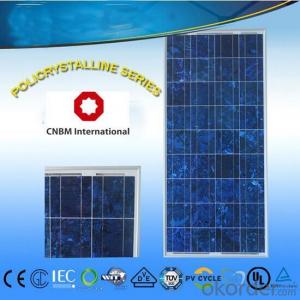Solar Cells Amazon - Monocrystalline Solar Cells for Solar Panels Energy Product System with TUV, MCS Certificate
- Loading Port:
- Tianjin
- Payment Terms:
- TT or LC
- Min Order Qty:
- 10 m²
- Supply Capability:
- 1000 m²/month
OKorder Service Pledge
OKorder Financial Service
You Might Also Like
Specifications
1.Solar panel energy system power from 165W-195W
2.100% TUV standard flash test
3.Certificate:TUV,UL,MCS
4.Quality Insurance
100% TUV standard flash test mono solar panel energy product system
1.What is 100% TUV standard flash test?
Flash test machine with TUV standard reference solar panel,all Propsolar Panel is tested with 100% TUV standard or standard higher than TUV standard
In the market,not all solar panel is real tested with TUV standard,Flash machine reference panel is not TUV standard,so the power is 2%-3% less than TUV standard.
2.Solar Panel Warranty
1)10 years limited manufacturing warranty
2)12 years for 90% of warranted minimum power
3)25 years for 80% of warranted minimum power
3.Solar Panel Electric Characteristics
CELL TYPE | 125 X 125 MONO SOLAR CELL | ||||||
ITEM | PS-M572165 | PS-M572170 | PS-M572175 | PS-M572180 | PS-M572185 | PS-M572190 | PS-M572195 |
Maximum Power(Wp) | 169.9 | 174.9 | 179.9 | 184.9 | 189.9 | 194.9 | 199.9 |
Open circuit Voltage (Voc) | 43.3 | 43.7 | 44.0 | 44.5 | 44.9 | 45.2 | 45.5 |
Short circuit Current (Isc) | 5.05 | 5.25 | 5.40 | 5.45 | 5.55 | 5.60 | 5.80 |
Maximum Power Voltage (Vm) | 35.3 | 35.5 | 35.6 | 36.0 | 36.3 | 36.5 | 36.7 |
Maximum Power Current (Im) | 4.67 | 4.79 | 4.92 | 5.00 | 5.10 | 5.21 | 5.31 |
Cell Efficiency [%] | 15.85 | 16.33 | 16.81 | 17.28 | 17.77 | 18.25 | 18.74 |
Module Efficiency [%] | 12.88 | 13.27 | 13.66 | 14.05 | 14.44 | 14.83 | 15.22 |
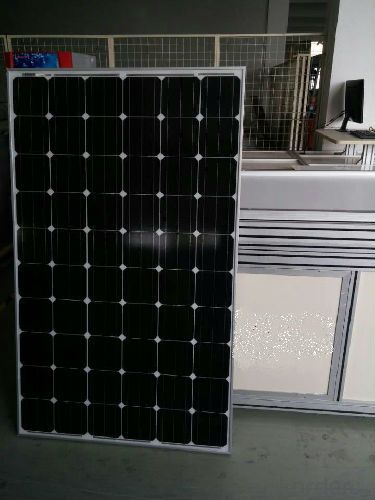
More Details:
Depending on construction, photovoltaic modules can produce electricity from a range of frequencies of light, but usually cannot cover the entire solar range (specifically, ultraviolet, infrared and low or diffused light). Hence, much of the incident sunlight energy is wasted by solar modules, and they can give far higher efficiencies if illuminated with monochromatic light. Therefore, another design concept is to split the light into different wavelength ranges and direct the beams onto different cells tuned to those ranges.[citation needed] This has been projected to be capable of raising efficiency by 50%. Scientists from Spectrolab, a subsidiary of Boeing, have reported development of multijunction solar cells with an efficiency of more than 40%, a new world record for solar photovoltaic cells.[3] The Spectrolab scientists also predict that concentrator solar cells could achieve efficiencies of more than 45% or even 50% in the future, with theoretical efficiencies being about 58% in cells with more than three junctions.
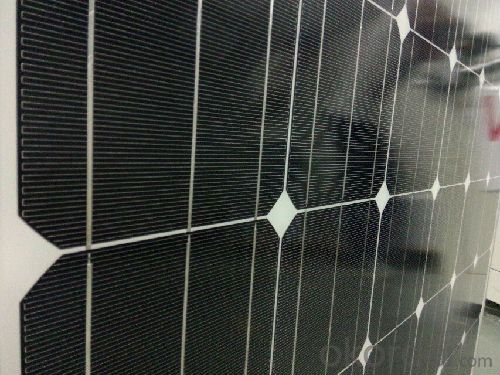
The life of the solar panels is determined by the Solar Energy Solar Cells, tempered glass, EVA, TPT and other materials, usually with better materials manufacturers panels made out of life can reach 25 years, but with the impact on the environment, solar cell board materials will change with time and aging. Normally used in 20 years of power will decay by 30%, it will be used in 25-year power attenuation of 70%.
Inspection and Maintenance of Solar Energy Solar Cells:
1. Check whether the damaged Solar Energy Solar Cells, to be promptly found and replaced.
2. Check the battery cables and the ground plate is good contact, without loss phenomenon.
3. Check the wiring at the combiner box if there is fever phenomenon.
4. Check the battery plate bracket loose and breakage.
5. Cleaning up around the panels shielding panels weeds.
6. Check whether the panel surface coverings.
7. Check the battery guano on the plate surface, and clean it if necessary.
8. The cleanliness of the panels were identified.
9. Windy weather to deal with solar panels and frame to conduct audits.
10. Snow days to respond in a timely manner to clean up the panel, the panel surface to avoid the frozen snow.
11. Heavy rain should check all waterproof seal is good, whether the water leakage.
12. Check if there are animals into the power station to the battery plate damage.
13. Hail response panel surface to conduct audits.
14. The battery plate temperature is detected, and the ambient temperature is compared for analysis.
15. Check it out on the issues to be addressed promptly analyzed and summarized.
16. To do detailed records of each inspection, in order to analyze later.
17. Summary records for analysis and archiving.
- Q: Are solar cells affected by temperature?
- Yes, solar cells are affected by temperature. High temperatures can cause a decrease in the efficiency of solar cells, resulting in a decrease in their power output. This is due to the fact that the performance of the semiconductor materials used in solar cells can degrade at elevated temperatures. Additionally, temperature variations can also lead to thermal stress, which can impact the structural integrity of the solar cells.
- Q: Is silicon-based solar cells and silicon-based thin-film solar cells the same?
- General silicon-based solar cells refer to monocrystalline silicon and polycrystalline silicon solar cells, while silicon-based thin-film solar cells are similar to sunpower producing that type of battery that can be made into curved components.
- Q: What is a polymer solar cell and how does it work?
- Polymer solar cells are actually like all the other solar cells, the polymer solar cell converts light into electricity, by converting light into a current.
- Q: Can solar cells be used in medical devices?
- Yes, solar cells can be used in medical devices. Solar cells can provide a renewable and sustainable source of energy for various medical devices, such as remote monitoring systems, wearable devices, and even implantable devices. They can help eliminate the need for frequent battery replacements and provide continuous power supply, making them particularly useful in remote or resource-limited areas.
- Q: What is the most commonly used material for solar cells?
- Because of the commercialization of solar cells. The variety of solar cells includes monocrystalline silicon solar battery, poly silicon solar cell, non crystalline silicon solar battery, there are also,cadmium, copper indium, etc.
- Q: What is the impact of solar cell installations on job creation?
- Solar cell installations have a significant positive impact on job creation. By promoting the growth of the renewable energy sector, these installations create a wide range of job opportunities across various fields such as manufacturing, installation, maintenance, and research. The demand for skilled workers in solar-related industries has been steadily increasing, leading to job creation and economic growth. Additionally, the solar industry often provides employment opportunities at both the local and national levels, contributing to the overall development of the workforce and the economy.
- Q: How do solar cells perform in areas with high levels of radiation?
- Solar cells actually perform better in areas with high levels of radiation. This is because higher radiation levels provide more sunlight, which is the primary source of energy for solar cells. As a result, solar cells in areas with high radiation can generate more electricity and have increased efficiency compared to areas with lower radiation levels.
- Q: What is the role of solar cells in powering emergency response systems?
- Solar cells play a crucial role in powering emergency response systems by converting sunlight into electricity. This renewable energy source ensures a continuous and reliable power supply, allowing emergency response systems to function independently during disasters or in remote areas where grid power might be unavailable. Solar cells provide a sustainable and environmentally friendly solution, reducing the reliance on fossil fuels and ensuring the efficiency and effectiveness of emergency response operations.
- Q: Can solar cells be used to power refrigeration systems?
- Yes, solar cells can be used to power refrigeration systems. Solar cells convert sunlight into electricity, which can be used to power various appliances including refrigeration systems. This allows for a sustainable and environmentally friendly way to operate refrigeration systems without relying on traditional electricity sources.
- Q: Can solar cells be used in powering e-bikes?
- Yes, solar cells can be used to power e-bikes. Solar panels can be mounted on the bike's frame or incorporated into accessories like panniers or baskets. These panels convert sunlight into electricity, which charges the bike's battery, providing a renewable and sustainable source of power.
Send your message to us
Solar Cells Amazon - Monocrystalline Solar Cells for Solar Panels Energy Product System with TUV, MCS Certificate
- Loading Port:
- Tianjin
- Payment Terms:
- TT or LC
- Min Order Qty:
- 10 m²
- Supply Capability:
- 1000 m²/month
OKorder Service Pledge
OKorder Financial Service
Similar products
Hot products
Hot Searches
Related keywords
